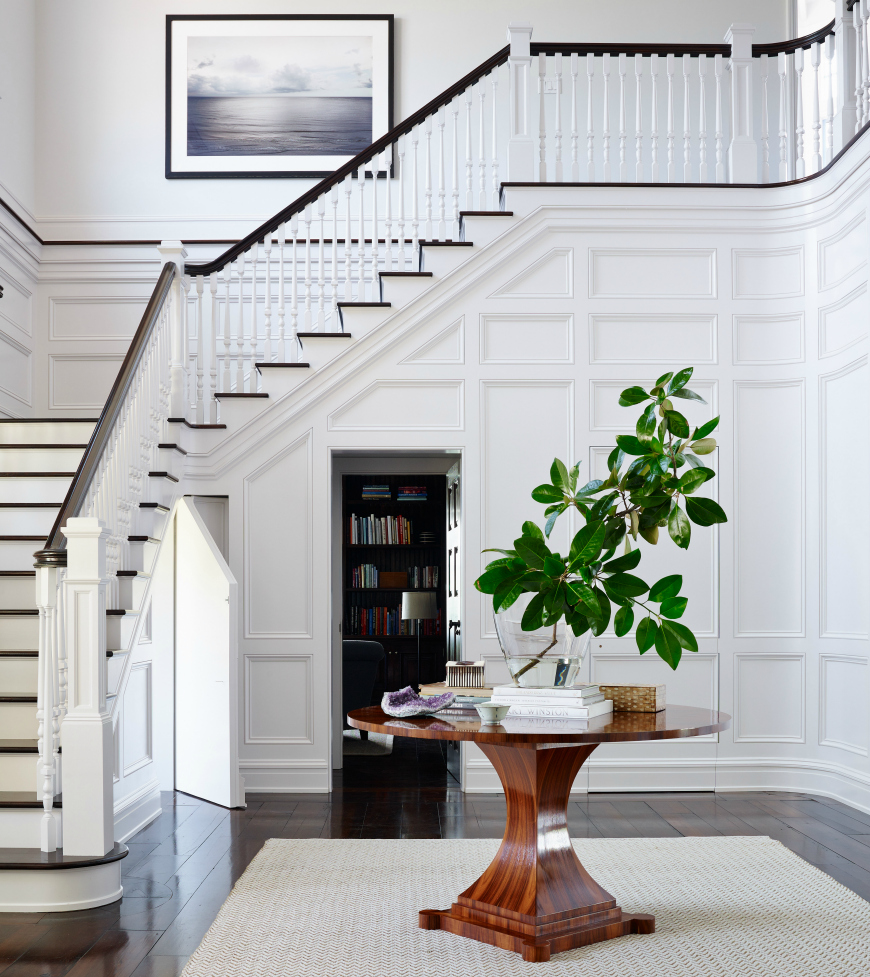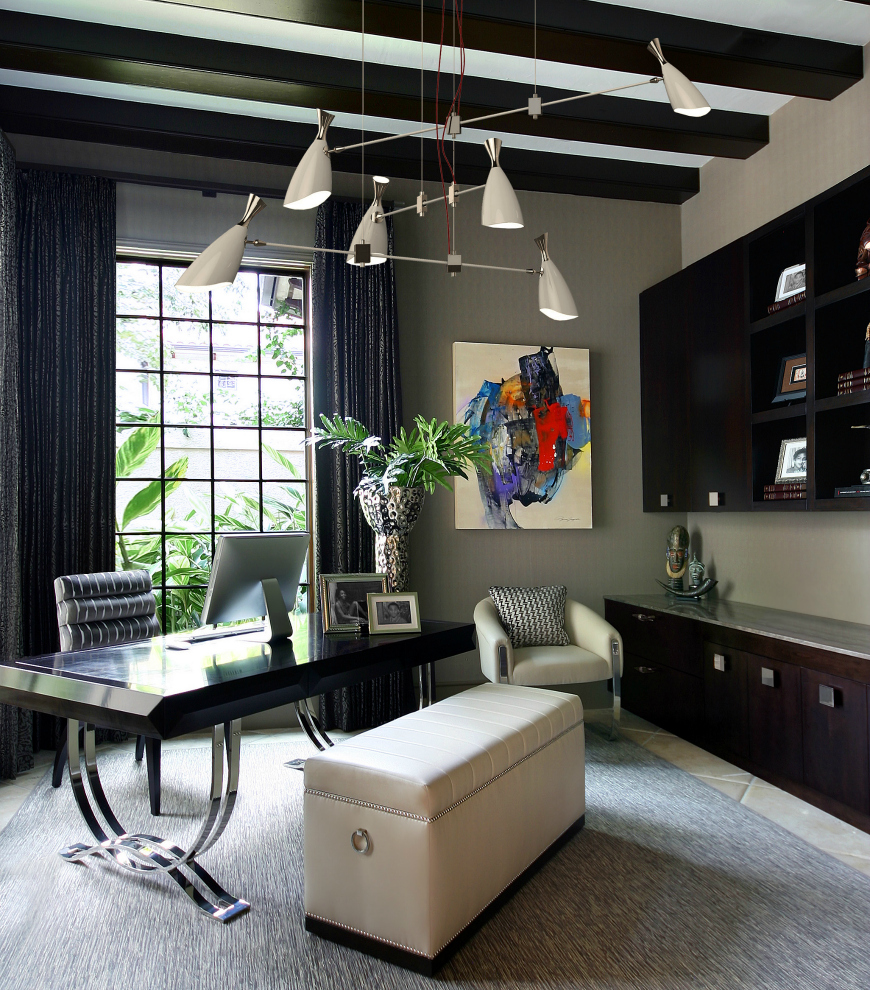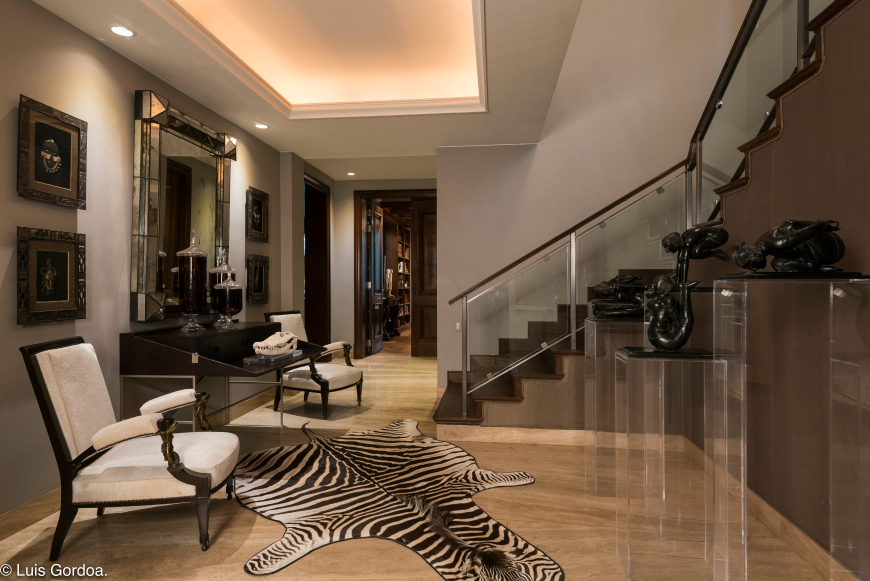Every client is different. Some are perfectly pleasant and some are—let’s face it—a headache. Those who fit into the latter category aren’t necessarily rude or picky; sometimes they’re just unable to make decisions. (This is a design project they have to live with, after all.) When reluctance is the case, there are a number of ways you, as the designer, can approach the situation. For this #TipTuesday, three designers talk about their own experiences with indecisive clients, and share advice on how to boost their confidence in design decision-making.
Andrew Howard
 Profession: Owner, Andrew Howard Interior Design, Jacksonville, FL
Profession: Owner, Andrew Howard Interior Design, Jacksonville, FL
What aspect of design do you find clients are most reluctant to decide on? I think clients have the hardest time deciding on big-picture things. A lot of times, I get clients who show me lots of different pictures of different styles, and before we get started, I always want to home in on a certain look—jumping off into the deep end and deciding on a certain direction can be difficult. I think the last thing any designer wants is for a house they work on to look like a showhouse.
Do you ever give clients a timeline as to when they must make a choice? I don’t. As a designer, I think our job is to show choices that fit what the client wants and narrow it down to things that will look good. If a client is unsure of what they want, I often ask them, as a family, how they think they would live in this room and what choice fits their lifestyle better. That usually helps. I feel my main job as a designer is to not only guide my clients but prevent them from making bad decisions.
Describe a situation when a client just wouldn’t make a decision. How did you resolve this? There’s no way to resolve this, unfortunately. If indecisiveness becomes a habit, it makes our jobs very difficult. I can be yelled at and belittled all day long, but if you can’t make a decision, we will have a hard time working together.
How do you get clients to be more confident in making decisions? An interior design job is built upon mutual trust. I don’t take a job if I don’t feel like I can trust the client to make good decisions based on what I show them. I think it is important to let the client know that every project is a team effort and you appreciate their input.

Ben Johnston
 Profession: Creative Director, Benjamin Johnston Design, Houston
Profession: Creative Director, Benjamin Johnston Design, Houston
What aspect of design do you find clients are most reluctant to decide on? Most definitely art! It is so subjective, and many clients get hung up on trying to build associations with pieces of artwork so that they can feel comfortable investing in it. Sometimes I am deeply involved in the process, and sometimes I work with gallerists and art consultants…. I think art advisers are saints for the patience it requires to get a client across the finish line—it’s not easy work!
Do you ever give clients a timeline as to when they must make a choice? For most things, yes. For furniture plans and the major components in them, it helps to structure the process of collaboration in a comprehensive way that allows clients to track through the process and give feedback during successive meetings. After I have completed the final design presentation, my clients have typically signed off on 80 to 90 percent of the design strategy. The final 10 to 20 percent is usually the art and accessories, which we often complete when we do the install and big reveal.
Describe a situation when a client just wouldn’t make a decision. How did you resolve this? Unfortunately, I think all designers have experienced this. In fact, I am dealing with one client right now that I have not been able to get across the finish line for nearly six months. All we need is one substantial piece of artwork to hang above the fireplace and the space will be completed. The piece is either too feminine or masculine, too bright or dark, too traditional or contemporary… The clients see things in the compositions that always seem to remind them of something that they don’t like. [laughs] It’s slightly maddening, because nearly 50 options have been considered, brought to the house and shot down…. The only way I can handle it gracefully is to simply disengage and be thankful that I am charging them for my time. If any other designers have suggestions on what to do in these situations, I would love to hear about them!
How do you get clients to be more confident in making decisions? Therein lies the art of being a designer and finding a collaborative journey on which to take your clients. If I have done my job, the decisions the client has to make will feel inevitable, appropriate, and still magical at the same time. Every designer’s process is different—mine has taken years to develop, and it has been refined over that time period. It’s part of the fun of being a practitioner in this industry!

Juan Carretero
 Profession: Principal, Capital C Interiors, New York City
Profession: Principal, Capital C Interiors, New York City
What aspect of design do you find clients are most reluctant to decide on? With color, sometimes you need to push the client’s perceptions and assumptions. For example, they might think a dark color in a ceiling would make the room cavernous, when in fact, the opposite would be true. Usually, showing the client a real-life room with similar situations will help. If not, images speak for themselves.
With furniture, it’s all about lining up expectations, comfort, scale, budget and delivery times. Juggling all of these can prove difficult, but that is what you are being hired for. It’s important as a designer to have very close relationships with a large pool of vendors so that you can always find the perfect piece for your client.
Art is very personal and it is unique, so finding the perfect piece for everyone can be daunting. Sometimes you must also educate your client. This might be time consuming, but spending some time with your clients going to art galleries can be a lot of fun, and you can learn a lot about them.
Sourcing accessories is difficult for two reasons. First, as important as they are, accessories are oftentimes the last thing in everyone’s priority list. Second, much to the designer’s dismay, clients almost always have their own—wedding gifts, travel souvenirs, family hand-me-downs, etc.
Do you ever give clients a timeline as to when they must make a choice? In theory, yes, but it is very difficult to penalize—for lack of a better word—a good client when they haven’t made a choice in time. I find it easier to present all pieces to a client at the same time, and in person, to get as much approved as possible. Explaining to the client why you think this choice you are proposing is the best for them is key. They will feel involved in the process.
Describe a situation when a client just wouldn’t make a decision. How did you resolve this? When a client is stuck, there is almost always a reason that should be addressed in person, or at least over the phone. Emails won’t do it. I think the best way to open the communication line is to figure out where their indecision is coming from and address it.
How do you get clients to be more confident in making decisions? At the beginning of any job, I usually try to make the client aware that they are about to embark on an adventure that requires team effort. If they do not want to be part of that team, because they are too busy or whatever other reason, then they will need to trust you 100 percent and it must be clear that you will be calling all the shots. (Dream job!) If that is the case, as the ultimate decision maker, you must make sure to do your homework about the client first so that you don’t second-guess yourself. The end user will be the client, not you. Their needs must come first.

